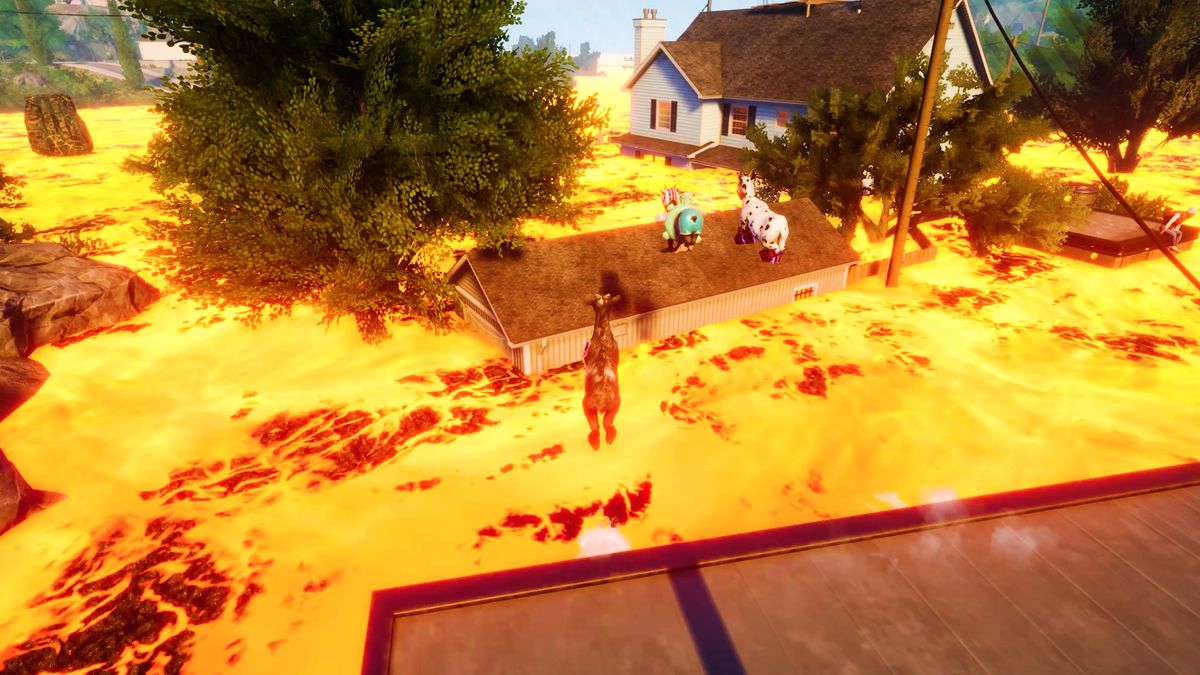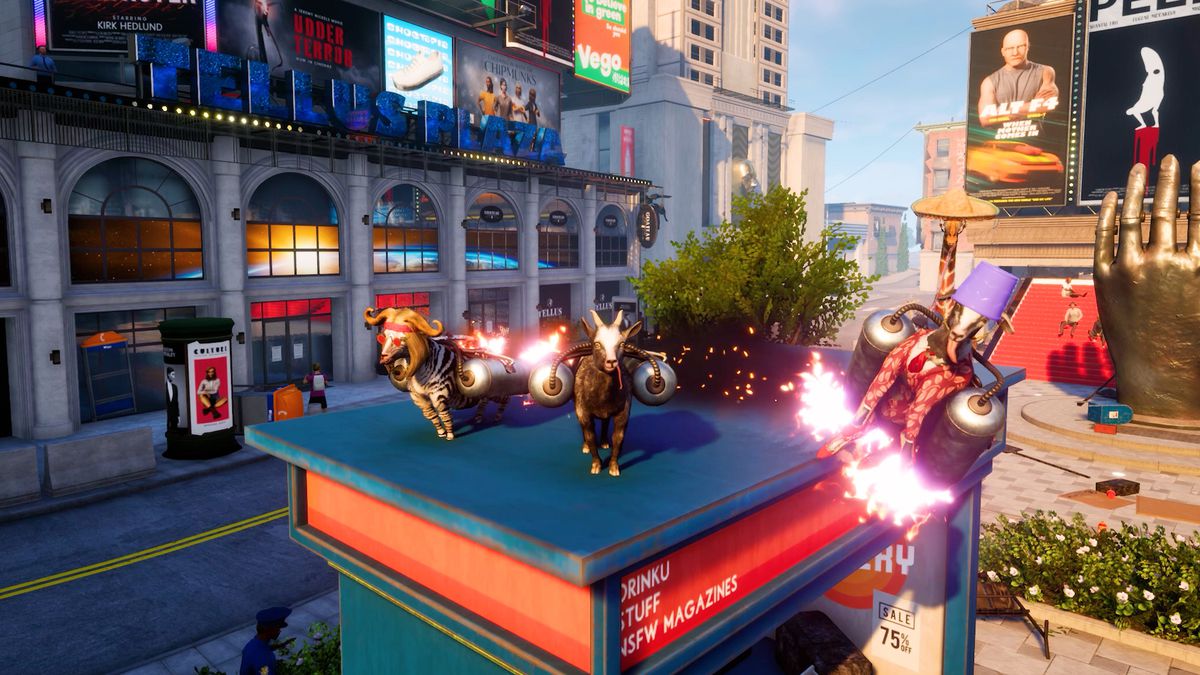There is a very convenient way of accurately and succinctly summing up the degree of absurdity to which Goat Simulator 3 aspires: There is no such thing as Goat Simulator 2.
Those familiar with Coffee Stain’s caprine and chaotic antics will likely recognize Goat Simulator as the wildly popular sandbox game from way back when. For those unacquainted with it, the premise is simple: You’re a goat with a penchant for misbehaving, tasked with causing as much of a ruckus as possible. From headbutting civilians to sticking your tongue to everything in sight, it’s a game that largely revolves around complete and utter bedlam.
The sequel — again, Goat Simulator 3, because three comes after one in goatspeak — is founded upon similar principles of chaos. What may strike people as surprising, however, is that it’s a type of chaos that has been filtered through a layer of sophistication. It’s obviously not an Arkane game (imagine if Goat Simulator took place in Dunwall…), but it’s a marked improvement when considered next to the original. So while it’s not necessarily my jam, I can admit that it knows what it wants to be, and puts everything it has into becoming precisely that.
Ironically, Goat Simulator’s greatest strength was always how roughly hewn its mechanical makeup was. The game, which originated as a joke project designed for a game jam, was riddled with the kinds of bugs that should have made it near-impossible to play — but by virtue of its nature as a literal goat simulator, they just made it even funnier. From Pilgor the goat’s raucous ragdolling to the wild emergent shenanigans that could arise from invisible gaps in the sandbox’s stitching, Goat Simulator quickly established itself as an excellent game to play with friends.
Image: Coffee Stain
This is one of many details that the developers at Coffee Stain have evidently been aware of while working on Goat Simulator 3. While the original game supported couch co-op, the sequel features a dedicated online multiplayer component that allows up to four players to compete in various minigames, which include proprietary versions of golf, treasure hunts, and The Floor Is Lava. If the original game was a jagged rock, Goat Simulator 3 is the product of what happens when you mine that rock for gems and embed them in something nicer to look at. It’s not a diamond necklace, but it’s, like… a smooth panel of granite with a couple of rocks that look like diamonds interspersed throughout. As I said earlier: It knows what it’s aiming for and is very good at staying true to that.
But it’s also ambitious in other ways. Rather than being a pure sandbox that’s exclusively designed to facilitate mayhem, Goat Simulator 3 has a story mode. It’s not exactly aiming for prestige storytelling (I’m not joking when I say it’s literally about the Goat Illuminati), but it’s there to serve as a sort of general guide to weave all of the individual instances of absurdity together. To progress the story, you essentially visit Ubisoft open world-style towers that are sporadically dotted across the map, each of which will aid you in unlocking an imposing and mysterious door that leads the way to Goat Castle. What lies behind it is anyone’s guess — but odds are it’s probably pretty wild.
The main story obviously isn’t overly demanding — an enormous part of Goat Simulator 3’s appeal is the fact it generally asks very little of you, leaving you to your own devices more often than not. But the scale of this style of play has also been expanded and iterated upon.
For example, there’s a house somewhere on the map owned by an old lady with a rocket launcher. When you approach her, she’ll start shooting at you, but if you hit her with your firework launcher or headbutt her, you’ll unlock a secret passage to her cellar that leads to… a retro Doom-style corridor shooter populated by a dozen other bazooka grannies. Once you defeat them all, you can actually unlock this character as an attachment — and given that as well as a goat, you can play as a shark, a giraffe, and more, the challenge of “How bizarre can we make this game?” was obviously a regular topic of discussion during development.
You can quite literally play Goat Simulator 3 as a shark on a skateboard being ridden by an old lady with a rocket launcher.

Image: Coffee Stain
Ultimately, Goat Simulator 3 is probably exactly what you think it is. It’s a more polished version of the first game with tons of new features, most of which have clearly come from carefully observing the elements of the original that resonated with people. The mobility is a little tighter, the sandbox is a little more responsive, and the random achievements have a little more rhyme and reason to them. But ultimately, it’s still a silly game about being a really annoying goat — there’s a pretty low ceiling for how serious that can be.
More so than anything else, Goat Simulator 3 feels like a great party game to play with friends. Everyone at my demo session at Gamescom, including the people I wasn’t in a lobby with, was laughing for pretty much 100% of the time I was there. It’s not deserving of special reverence for its work in innovation, systems design, or just about anything else. But it’s difficult to criticize something that has a very clear design ethos and manages to adhere to it with almost perfect accuracy.
If you reckon you might be interested in Goat Simulator 3, you will be — and that’s the most truthful thing anyone can say about it.
Goat Simulator 3 heads to PlayStation 5, Windows PC, and Xbox Series X on Nov. 17.












